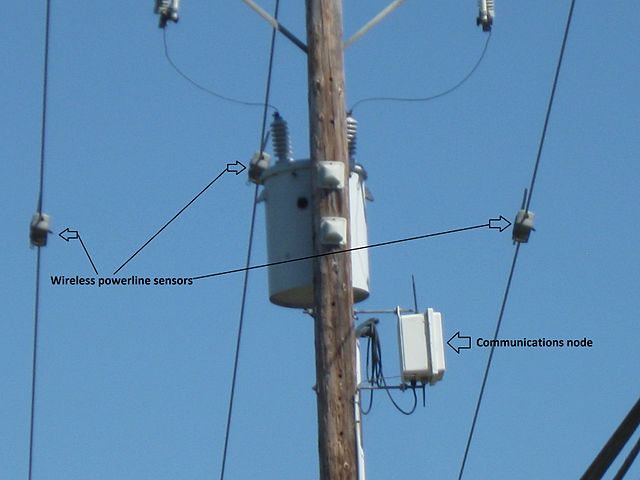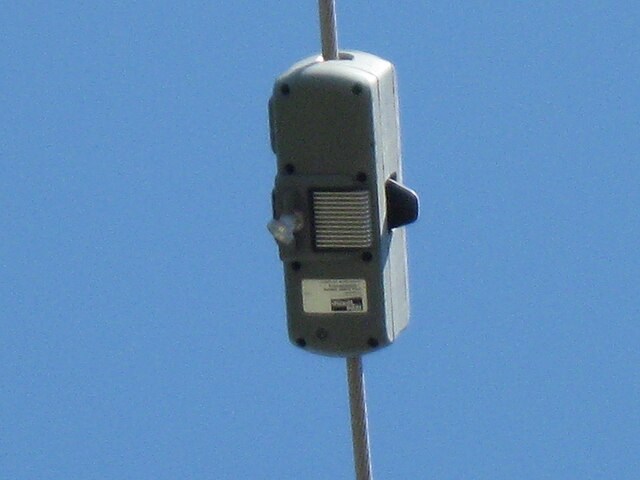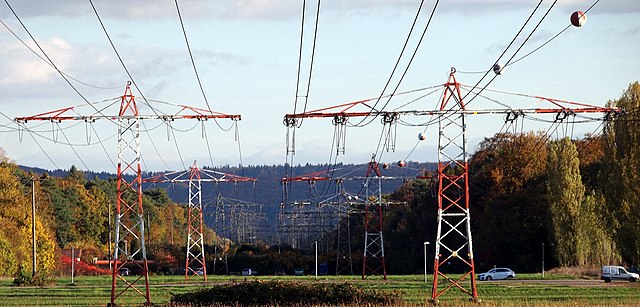Wireless powerline sensor
A Wireless powerline sensor hangs from an overhead power line and sends measurements to a data collection system. Because the sensor does not contact anything but a single live conductor, no high-voltage isolation is needed. The sensor, installed simply by clamping it around a conductor, powers itself from energy scavenged from electrical or magnetic fields surrounding the conductor being measured. Overhead power line monitoring helps distribution system operators provide reliable service at optimized cost.
Wireless overhead power line sensors hanging from each of the three phases of a 4160 Volt powerline in a residential neighborhood, in Palo Alto, California
Three powerline sensors hanging on conductors 2 meters to the right of a power pole with a distribution transformer and communication network node
Three wireless overhead powerline sensors hanging from the phases of a 4160 Volt powerline and network node attached to a power pole. The photo also shows an unrelated distribution transformer, which reduces 4160 V to 240/120 V.
Closeup of overhead powerline sensor hanging from one phase of a 4160 volt powerline
An overhead power line is a structure used in electric power transmission and distribution to transmit electrical energy along large distances. It consists of one or more conductors suspended by towers or poles. Since the surrounding air provides good cooling, insulation along long passages and allows optical inspection, overhead power lines are generally the lowest-cost method of power transmission for large quantities of electric energy.
Overhead power line in Gloucestershire, England.
A man working on powerlines in Nauru (2007)
High- and medium-voltage power lines in Łomża, Poland
low-profile power lines near an airfield








